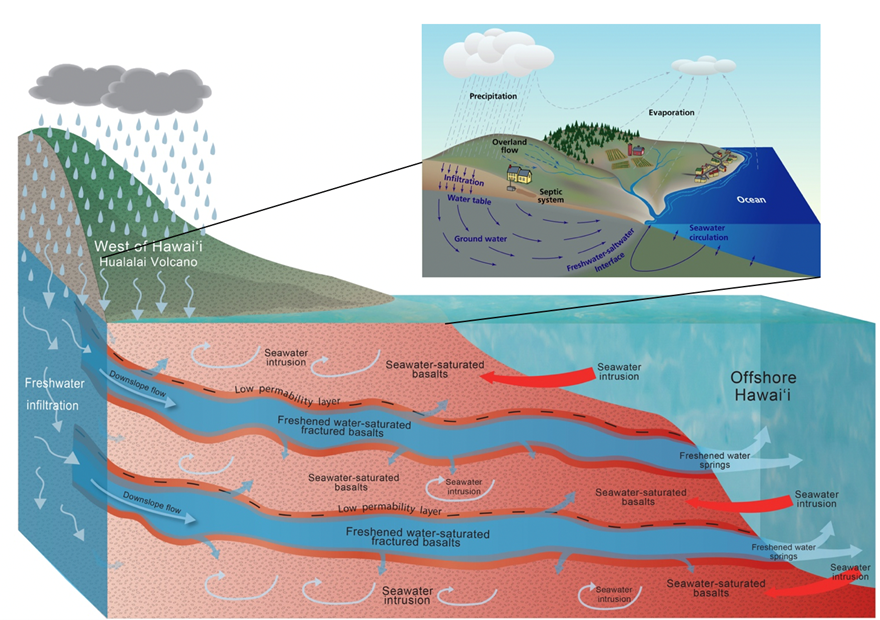

Kona Science Cafe
November 19, 2020 @ 5:00 pm - 7:30 pm HST
| FreeClosing the loop in the water cycle: hidden groundwater pathways to the ocean
Drs. Henrietta Dulai and Eric Attias, UH Mānoa
The ‘Ike Wai project is a multi-disciplinary research project within the University of Hawaii system to study fresh-water flows in the Hawaiian Islands. In the research for this two-part presentation, the project collected information on the spatial distribution of submarine groundwater discharge along the Kona coast in West Hawaii. The first half of the talk will discuss nearshore groundwater discharging along the shoreline, which is often sourced outside of perceived aquifer boundaries. The chemical fingerprints in water in the form of nutrients, dissolved inorganic and organic carbon, metals, and anthropogenic pollutants reflect the wide range of land use along groundwater flow lines from pristine to waste-water affected areas. Another important finding is that nearshore groundwater discharge does not add up to the amount of water that is estimated to recharge in the aquifers. An answer to this discrepancy is offered in the second part of the presentation. Marine controlled-source electromagnetic (CSEM) imaging has revealed a novel transport mechanism of freshwater moving from onshore to offshore through a multilayer formation of water-saturated layered basalts. CSEM models of the water column show multiple vertical freshwater plumes extending from the seafloor to the ocean surface. These findings provide valuable information to elucidate hydrogeologic and oceanographic processes affecting biogeochemical cycles in coastal waters worldwide.
Dr. Henrietta Dulai is an Associate Professor at the Department of Earth Sciences, School of Ocean Earth Science and Technology, University of Hawaii and affiliate faculty at the Water Resources Research Center. Dr. Dulai is a coastal hydrologist and geochemist and has been studying aquifers and coastal environments in Hawaii and other Pacific islands for over 10 years. Some major topics of interest are surface water-groundwater interactions in streams, ponds and coastline, tracing of human contaminants, as well as the effects of sea level rise on coastal hydrology and chemistry.
Dr. Eric Attias is a research affiliate faculty with the University of Hawaii at Mānoaʻs Hawaii Institute of Geophysics and Planetology. Dr. Attias’s research focuses on marine electromagnetic methods to image various oceanic Earth structures such as subduction zones, mantle plumes, and offshore submarine freshwater.
Schedule and format:
5 p.m. start. There is less need to wait for people to trickle in after being delayed in traffic, so we’re starting on time. The Zoom meeting room will be open at least 10 minutes beforehand.
Pupus: as we will be virtual, feel free to have your own drinks and pupus. Please mute your microphone when crunching on chips!


